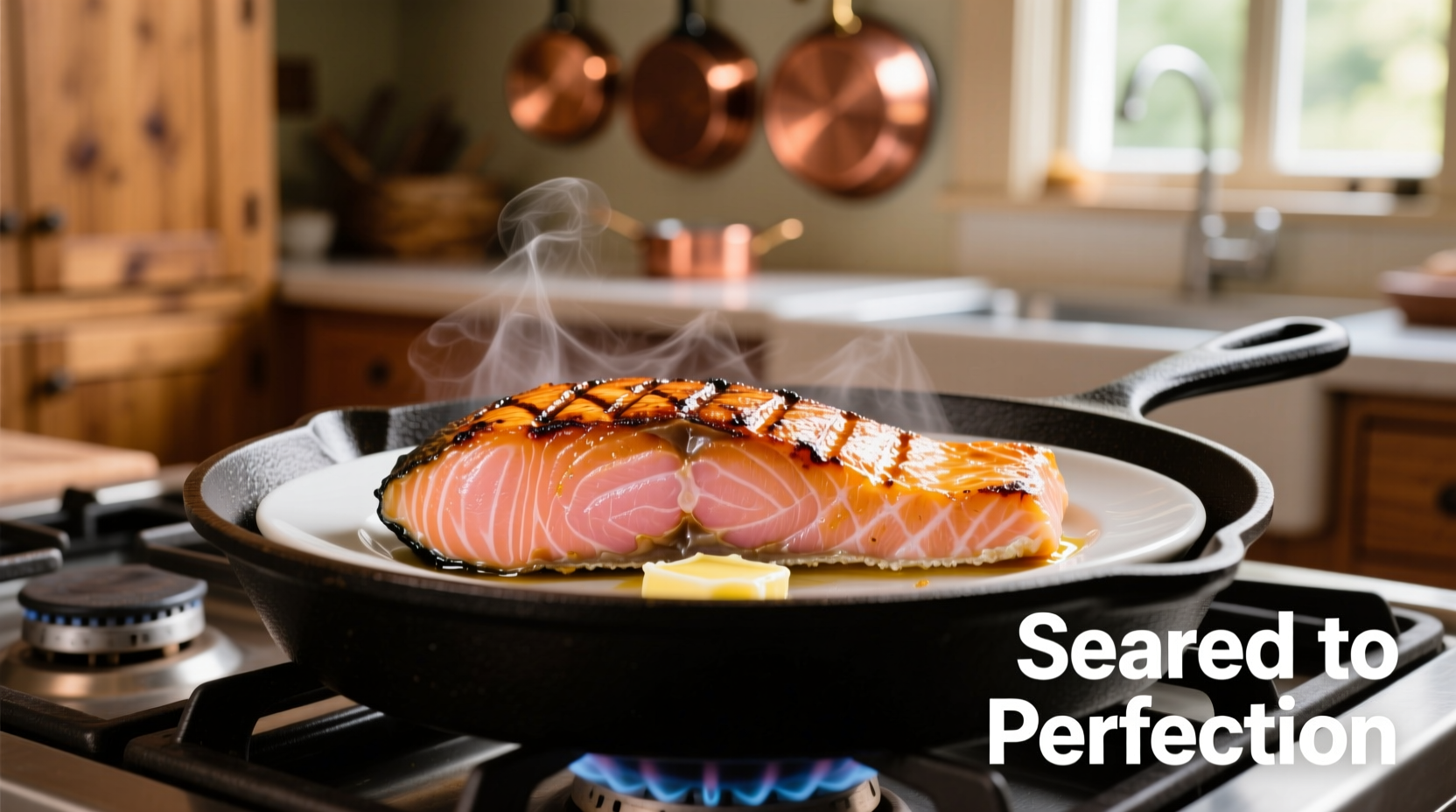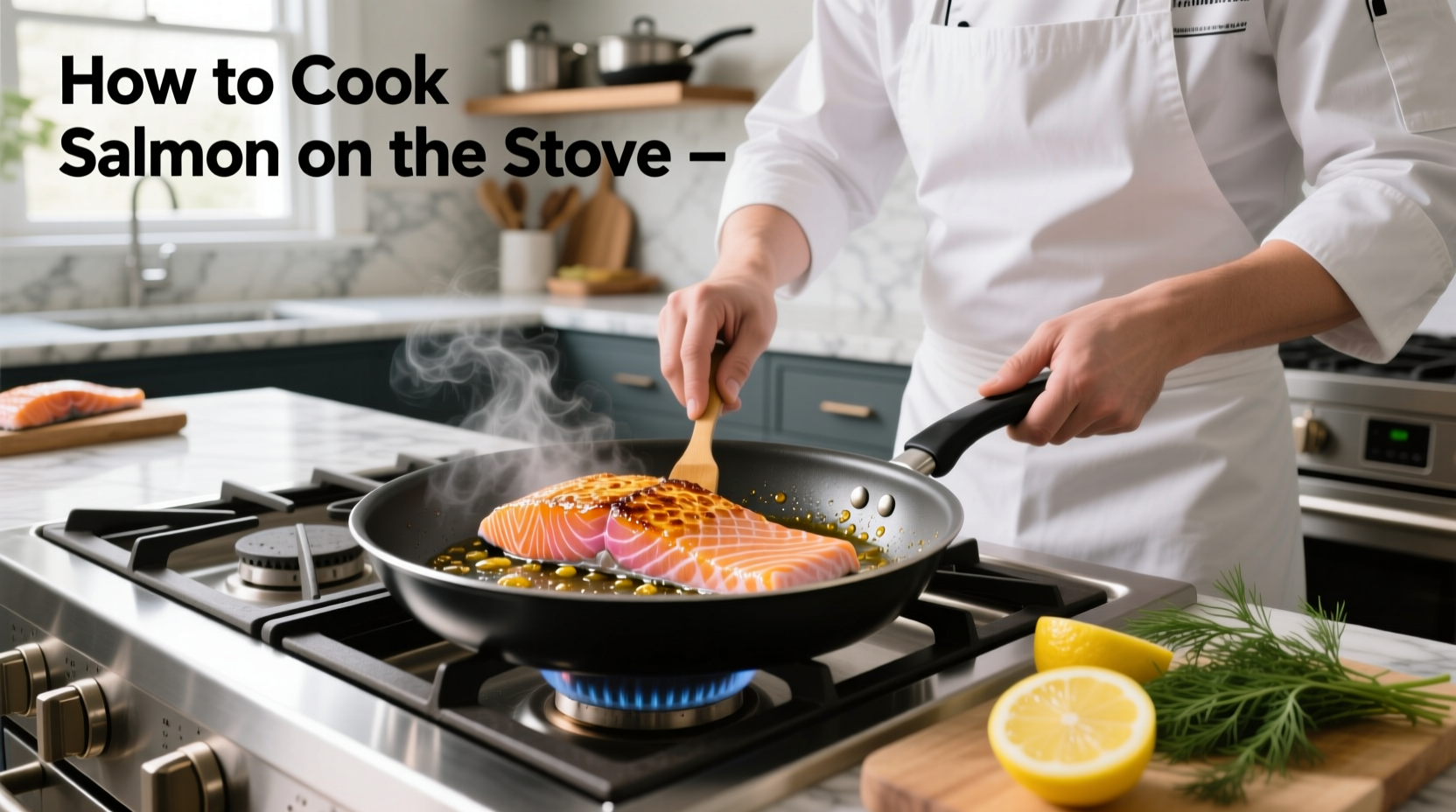Why Stovetop Salmon Beats Other Cooking Methods
Cooking salmon on the stove offers unmatched control for home chefs. Unlike oven baking which requires preheating, or grilling which risks overcooking, the stovetop method gives you immediate temperature adjustments and visual feedback throughout the process. Professional chefs favor this technique for its speed and precision—perfect for weeknight dinners when time matters.
Your Essential Salmon Preparation Checklist
Before heating your pan, proper preparation determines success. Start with center-cut salmon fillets between 1-1.5 inches thick—thinner cuts dry out quickly while thicker portions cook unevenly. Pat the fish completely dry with paper towels; moisture creates steam instead of the crispy sear you want. Season just before cooking with kosher salt (¼ teaspoon per pound) and freshly cracked black pepper. For optimal flavor development, add lemon zest and fresh dill during the last two minutes of cooking.
| Cooking Method | Time Required | Texture Result | Best For |
|---|---|---|---|
| Stovetop (this method) | 12-15 minutes | Crispy skin, moist interior | Weeknight meals, small batches |
| Oven Roasting | 15-20 minutes | Uniformly cooked | Dinner parties, multiple portions |
| Grilling | 8-12 minutes | Smoky exterior, firm texture | Summer cooking, outdoor meals |
Step-by-Step Stovetop Cooking Process
Step 1: Pan Selection and Heating
Choose an oven-safe stainless steel or cast iron skillet—nonstick pans won't create the proper sear. Heat over medium heat (350°F) for 3 minutes until a drop of water sizzles immediately. Add one tablespoon of high-smoke point oil like avocado or grapeseed.
Step 2: Skin-Side Down Cooking (Critical Phase)
Place salmon skin-side down with firm pressure for 10 seconds to ensure full contact. Cook undisturbed for 7-9 minutes—this creates the crispy skin professionals achieve. The ideal visual cue: edges turn opaque halfway up the fillet. According to USDA Food Safety and Inspection Service guidelines, fish should reach 145°F internal temperature for safety.

Step 3: The Flip and Finish
Using a thin, flexible spatula, gently flip the salmon. Cook flesh-side down for 3-4 minutes. For medium doneness, remove when internal temperature reaches 125°F—the residual heat will carry it to 145°F. Overcooking is the #1 mistake home cooks make; salmon continues cooking off-heat.
Context Boundaries: When Stovetop Works Best
This method shines for single or double portions but has limitations. Food safety experts from the FDA recommend against cooking more than two 6-ounce fillets simultaneously in one pan—the crowded conditions lower the temperature and create steam instead of sear. For larger gatherings, cook in batches rather than compromising results. Additionally, this technique works best with skin-on fillets; skinless salmon requires careful monitoring as it sticks more easily.
Troubleshooting Common Problems
- Sticking salmon: Ensure proper pan temperature (water droplets should dance) and avoid moving the fish too soon
- Dry texture: Reduce cooking time by 1-2 minutes and check temperature earlier
- Burning oil: Lower heat immediately and wipe pan clean before restarting
- Uneven cooking: Choose uniformly thick fillets or ask your fishmonger to butterfly thicker portions
Serving Suggestions for Maximum Flavor
Rest salmon for 3 minutes off-heat before serving—this allows juices to redistribute. Pair with lemon-dill sauce (Greek yogurt, fresh dill, lemon juice) or a simple pan sauce made from deglazing with white wine and butter. Nutritionists at the American Heart Association recommend serving salmon with dark leafy greens and whole grains for a balanced meal rich in omega-3 fatty acids.
Key Takeaways for Perfect Results
Mastering stove-cooked salmon requires attention to three critical elements: proper pan temperature, undisturbed initial cooking phase, and precise internal temperature monitoring. The ideal result shows clean flakes when gently pressed but remains moist throughout. Remember that carryover cooking adds 5-10°F after removal from heat—timing your finish accordingly prevents dryness. With these techniques, you'll consistently achieve restaurant-quality salmon that impresses without complicated equipment.











 浙公网安备
33010002000092号
浙公网安备
33010002000092号 浙B2-20120091-4
浙B2-20120091-4